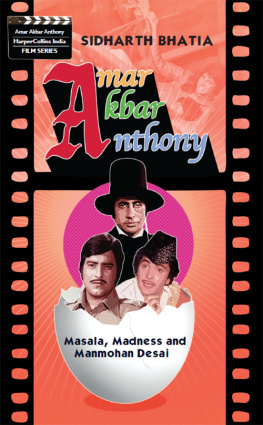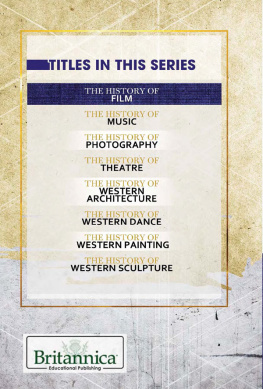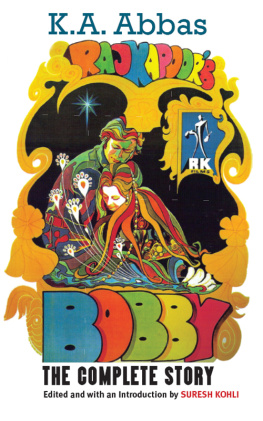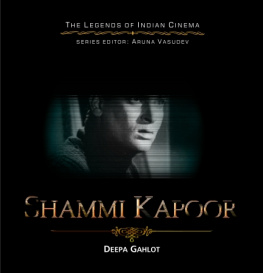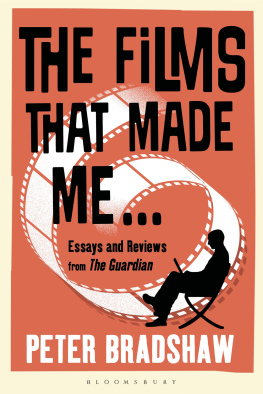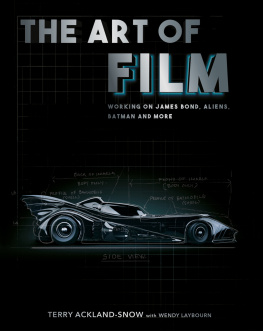A whole book on just one film? Exploring all aspects of a film in detail is a tempting thought, but not an easy project, as soon became evident when I set out to tackle Amar Akbar Anthony. It is one of those iconic films that everyone in Indiafrom the serious film buff to the curious, occasional filmgoerhas seen. Those who missed it the first time round, when it was just released, would have caught it during its innumerable reruns on television. It is the kind of film people remember fondly, and whose very mention brings a knowing smile to their faces. Could anything new be said about it?
It turned out that there was much that was waiting to be discovered. The making of the film was full of interesting stories and anecdotes, and the movie itself was open to several analyses and interpretations.
But such an undertaking required helpfrom those who had been involved in its making, on camera as well as behind the scenes. The man who brought it all together is unfortunately no more with us. Manmohan Desai had conceived and controlled this madcap film from beginning to end. It was his vision, which he held on to in the face of scepticismof the stars and several others around him. Fortunately, there was an excellent book on him, and the author, Connie Haham, very generously allowed me to quote from it.
Ketan Desai, the directors son, was a young assistant on the sets of Amar Akbar Anthony, and happily recalled anecdotes about his father and his style of functioning. The stars of the film were all forthcoming because they had had such a good time making it. Amitabh Bachchan, of course, is a model interviewee, coming up with tiny details that add much value to any story. Rishi Kapoor promptly agreed to meet, and then recounted stories about Manmohan Desai and his offbeat ideas. Shabana Azmi, music director Pyarelal and even the reclusive Kader Khan gladly recalled their experiences while working on the film. Ramesh Meer recounted how the miracles which are an integral part of Amar Akbar Anthonywere created. The retired cameraman Peter Pereira, puzzled why anyone should track him down to talk about something he had done years ago, was voluble as he went down memory lane. Nasreen Munni Kabir opened up her phone book to provide me with contacts. I wish to thank all of them for their generosity.
A special thanks to the team at HarperCollins, particularly V.K. Karthika and editor Shantanu Ray Chaudhuri. Shantanu brings enormous knowledge of Hindi cinema and ensures that writers are kept on the straight and narrow, especially when it comes to facts.
I have to, of course, acknowledge the enormous patience of my wife Almona who, despite her puzzlement at my wanting to see the film over and over again, did not mind. Though it did help that she liked Amar Akbar Anthony as much as I did.
C AST
Vinod Khanna: Inspector Amar Khanna
Rishi Kapoor: Akbar Ilhabadi
Amitabh Bachchan: Anthony Gonsalves
Neetu Singh: Dr Salma Ali
Parveen Babi: Jenny
Shabana Azmi: Lakshmi
Nirupa Roy: Bharati
Pran: Kishen Lal
Jeevan: Robert
Yusuf Khan: Zebesco
Mukri: Taiyyab Ali
Nasir Hussain: Catholic Priest
Kamal Kapoor: Superintendant Khanna
Hercules: Raghu
C REW
Produced by: Manmohan Desai and Subhash Desai
Directed by: Manmohan Desai
Screenplay: Prayag Raaj
Dialogue: Kader Khan
Music: Laxmikant-Pyarelal
Lyrics: Anand Bakshi
Cinematography: Peter Pereira
Editing: Kamlakar Karkhanis
Art direction: A. Rangaraj
Sound re-recordist: Mangesh Desai
Audiographer: Kuldeep Singh
Associate re-recordist: Kuldip Sood
Special effects: Kirit Kumar
Titles designer: G.D. Art
Special effects: Ramesh Meer and Peter Pereira
Stunts: Ravi Khanna
1
Heart of Madness
You see the whole country of the system is juxtapositioned by the haemoglobin in the atmosphere because you are a sophisticated rhetorician intoxicated by the exuberance of your own verbosity.
T hese are hardly words that would sit well in a poem, and even less in a Hindi film song. And yet, this bit of whimsy kicks off one of the most exuberant songs of the 1970s, a madcap romp during which the hero (Amitabh Bachchan) woos his sweetheart (Parveen Babi) right from under the nose of her well-muscled escort during an Easter dance.
Somewhat like jabberwocky, these nonsensical words do not mean anything, but fit in well with the mood of the moment and also with the onscreen character of Anthony Gonsalves, a frivolous young street-smart tapori who is a bootlegger by profession and a tough guy by inclination. But he is a romantic and has the proverbial golden heart. How can anyone not like him?
Anthony has been waiting for The One and from the moment he sees the girl walk into the church one day, he is in love. In his words, Violins played in my head, a bell rang in my heart. But he does not know how to get close to her since she is always accompanied by her tough-looking bodyguard Zebesco. He invites her for a date but learns she is already committed to attending an Easter dance, an important date on the social calendar of young Christian boys and girls in Bombay. That gives Anthony an ideahe lands up there, wearing a top hat, coat-tails and a monocle: quite the gent. Making a dramatic entrance by stepping out of a giant Easter egg, he sings and dances for her, baring his heart for her to see.
My name is Anthony Gonsalves, he declares. The song, with a crazy jumble of English words juxtaposed between the verses, was written by Anand Bakshi. What is less known is that the nonsensical sentences were the work of Amitabh Bachchan. He used to mumble all kinds of gibberishrandom English words strung together that did not particularly make sense but sounded impressiveall the time. It was a habit from college. The words didnt mean anything at all, he says. Manmohan Desai had heard Bachchan mutter the bit about the sophisticated rhetorician intoxicated verbosity (which is an almost exact quote by British politician Benjamin Disraeli in 1878, except that Disraeli had used the term inebriated instead of intoxicated). Amused by its sheer absurdity, Desai asked Bachchan about it. But there was nothing to tell, it was just plain old nonsense. Desai saw potential in this nonsense and slowly the idea was born to include the words in the song. Bachchan sang the lines himself.
Despite this collaborative effort, much of the credit for the sequence should go to Desai. As the master of the masala film, he had a sharp eye and ear for what would work. He even worked closely with dance director Kamal for the steps and came up with the idea of dressing Bachchan in a top hat, tails and a monocle. The pice de rsistance was the large Easter egg out of which the character of Anthony emerges.
In all his films, Desai demonstrated remarkable felicity for telling a good story in an entertaining way, with all the key ingredients of a good Hindi commercial filmcomedy, pathos, drama, high emotionmixed with a few catchy tunes, lavish sets and good-looking stars for the perfect confection. What distinguished him from others was his light touchhe knew when to pull back.
In Amar Akbar Anthony, his first film as a producer, he got the recipe just right. Not one scene or moment is out of place. The whole package comes together perfectly and the films great strength is the fact that four decades on, it still has the ability to engage the next-generation viewer.
Amar Akbar Anthony was Desais fourteenth film (IMDB shows thirteen films before this one). He was barely forty years old when he began directing it and it was finished in less than a year. Desai, who had made not even a film a year since his debut in 1960 with Chhalia, had suddenly turned prolific; in 1976, he was directing no less than four films at the same time:
Next page
